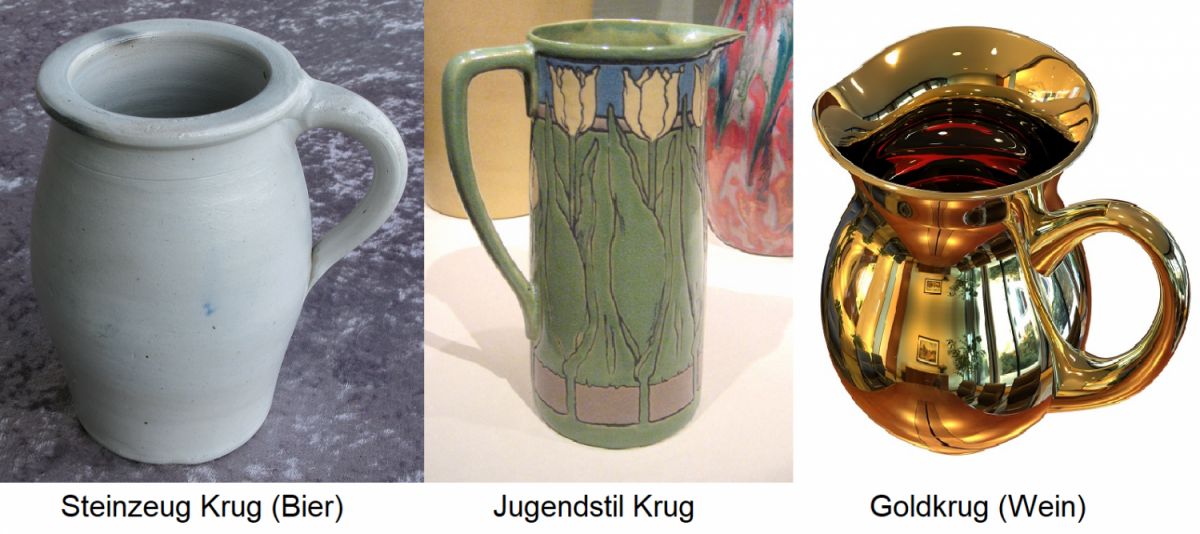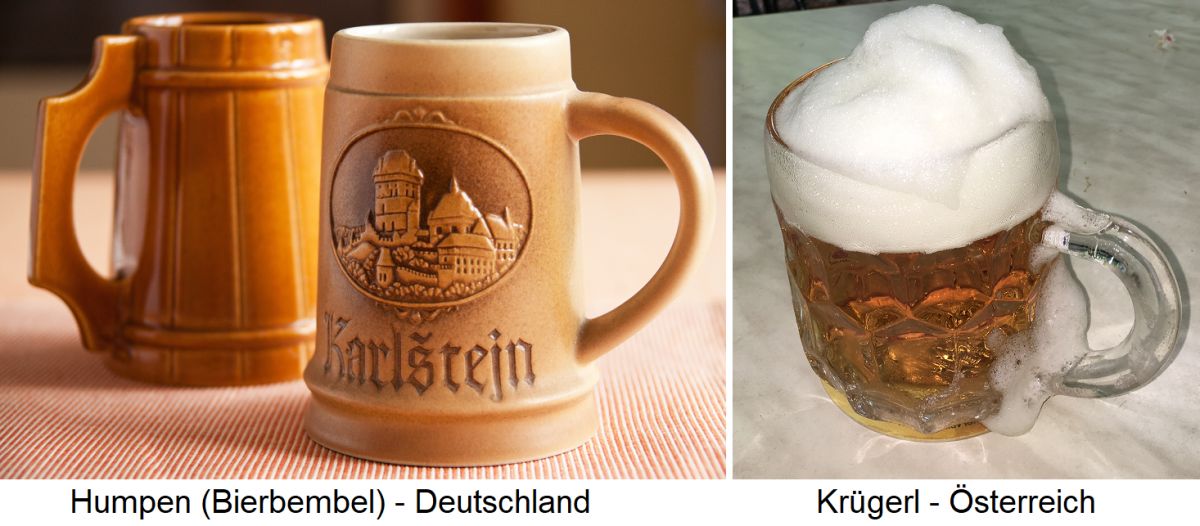Designation for a bulbous or cylindrical vessel used for transporting, storing, keeping and dispensing liquids. Smaller formats also serve as drinking vessels. Amphorae also belong to the group of jar-like vessels. The preferred materials for the production of jugs are mainly stoneware or glass, but silver, tin, porcelain, earthenware and others are also used. A jug usually has a vertical handle on the side and sometimes a beak-shaped spout (spout) and also a lid. In Greek mythology, the "Pandora's box" was a pithos (clay jug). Canopic jars are the vessels in which the entrails were buried separately during mummification in ancient Egypt. In the ancient site of Canopus (Egypt) there was a temple where the god of the afterlife Osiris was worshipped in the form of a jar with a human head that contained Nile water.

The jug was also frequently used as a symbol in many cultures. In Indian art it is a symbol of overflowing fertility and abundance and also the symbol of the potion of immortality. In early Christian art, it is often depicted as a jug with tendrils and leaves growing out of it or with birds drinking, pointing to the water of life it contains. Even today it is regarded as a symbol of drunkenness. In Heinrich Kleist's literary work "Der zerbrochene Krug" (The Broken Pitcher), it serves as a metaphor for lost innocence as well as an admonition in the proverb "The pitcher goes to the well until it breaks". The right to serve guests commercially in a pub, which was often coupled with the right to brew, was understood as the right to hold a jug in the Middle Ages.

Jugs are used in many countries with country-specific names such as brocca (Italy), cruche (France), jug (England) or krushka (Russia). The difference to a jug is the tubular spout for the spout that is common there (as in a watering can). In modern usage, a jug is usually a drinking vessel, especially for beer, with a volume of 0.5 or 1 litre. In Austria, a "Krügerl" is the name for both the drinking vessel and the volume. The same applies in Germany to the "Halbe"; here there are also the terms "Humpen" or Bierbembel. Jug-like vessels are also often used for decanting wine. See also hollow measures and wine vessels.

In the USA-California, a simple consumption wine is also called Jug Wine (Krugwein = openly bottled wine).
Islamic jug: By Marie-Lan Nguyen, Public domain, Link
Florence jug: By I, Sailko, CC BY 2.5, Link
Bartmann jug: By Goldi64 - Meyers Konv. Lexikon, Link
Stoneware jug: By Goldi64 - Wikimedia, CC BY-SA 3.0, Link
Art Nouveau jug: By Wikipedia on Flickr, CC BY-SA 2.5, Link
Gold jug: By Wilson Blanco on Pixabay
Tankard: By PublicDomainPictures on Pixabay
Tankard: Norbert F. J. Tischelmayer
Voices of our members

Serious sources on the internet are rare - and Wine lexicon from wein.plus is one such source. When researching for my articles, I regularly consult the wein.plus encyclopaedia. There I get reliable and detailed information.
Thomas Götz
Weinberater, Weinblogger und Journalist; Schwendi